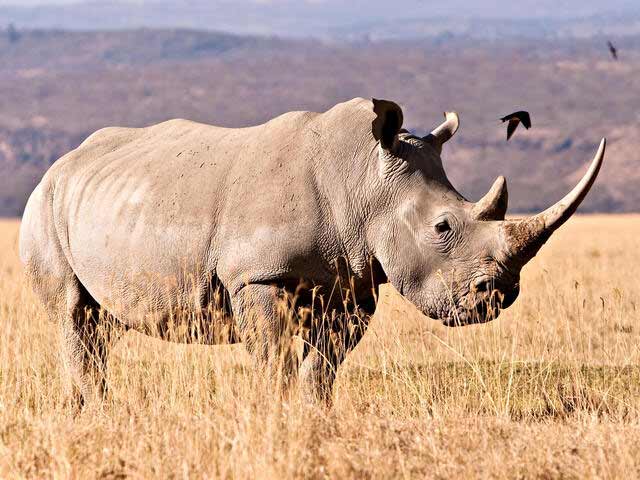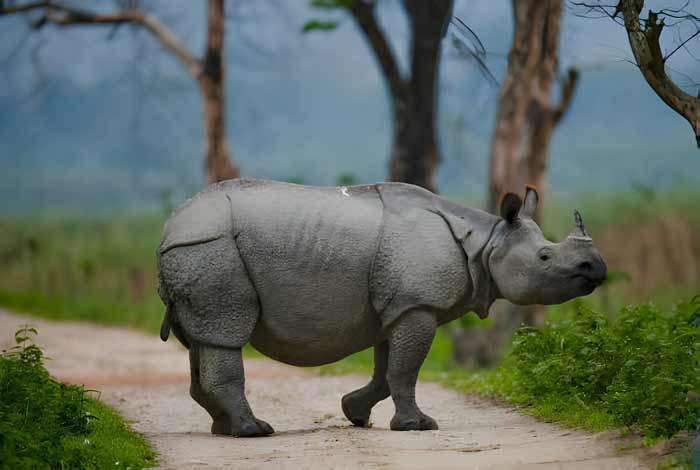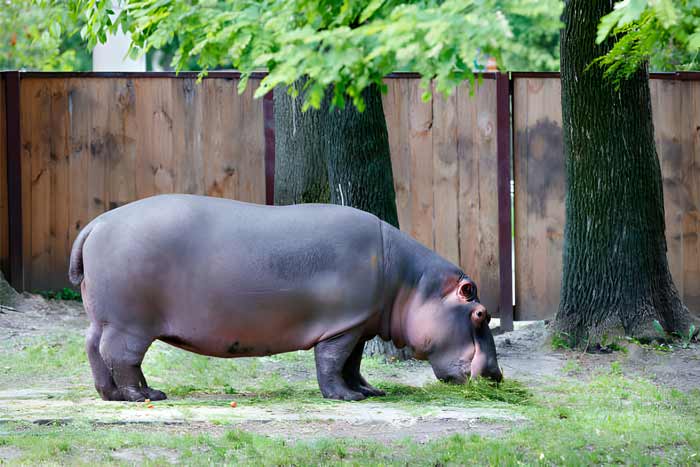In the world of large animals, rhinos and hippos are often admired for their huge size and strength. These big animals have some things in common, but they also have many differences that make each of them special in their own way.
In this article, we will explore these differences in detail, offering insights into their unique characteristics.
Quick Overview
| Rhinoceros | Hippopotamus | |
|---|---|---|
| Average Weight | Around 5,000 pounds, can exceed 7,000 pounds | Typically 3,000 to 4,000 pounds, up to 4,500 pounds |
| Length | 12 to 15 feet | 11 to 14 feet |
| Height | Around 6 feet at the shoulder | Approximately 5 feet |
| Skin | Thick and protective, with one or two horns | Thick with a natural sunscreen, lacks horns |
| Defense | Horns made of keratin | Large jaws and sharp teeth |
| Social Behavior | Mostly solitary, aggressive when threatened | Social, living in groups, territorial in water |
| Habitat | Grasslands and savannas, frequent water bodies | Semi-aquatic, rivers and lakes |
| Diet | Herbivorous, grass and foliage | Herbivorous, grasses, nocturnal grazing |
| Lifespan | About 35-40 years in the wild | Around 40-50 years in the wild |
Size

The rhinoceros, particularly the white rhino species, presents an imposing figure. On average, rhinos weigh about 5,000 pounds (2,268 kg), but some species like the white rhino have been recorded at weights exceeding 7,000 pounds (3,175 kg).
They measure approximately 12 to 15 feet (3.7 to 4.6 meters) in length and stand around 6 feet (1.8 meters) tall at the shoulder. Their build is muscular and robust, a design honed for power and durability.

In contrast, the hippopotamus, while slightly lighter, is equally impressive. Hippos typically weigh between 3,000 to 4,000 pounds (1,361 to 1,814 kg), with some growing up to 4,500 pounds (2,041 kg).
They span about 11 to 14 feet (3.3 to 4.2 meters) in length and have a height of approximately 5 feet (1.5 meters). Their unique barrel-shaped bodies are perfectly adapted for life in and out of water.
Skin and Defense

The rhino’s skin is thick and protective, a natural armor complemented by one or two horns made of keratin, serving as formidable tools for defense and combat.
The hippopotamus, though lacking horns, is not defenseless. Its skin is thick and secretes a natural sunscreen, giving it a distinctive reddish hue. The hippo’s primary defense lies in its large jaws and sharp teeth, capable of delivering powerful and effective bites.
Behavior
Rhinos are predominantly solitary creatures, known for their territorial nature and a tendency towards aggression when threatened. Their powerful charges are a sight to behold, capable of deterring most adversaries.

Hippos, conversely, exhibit a more social demeanor, living in groups known as pods. Despite their communal living, hippos are notorious for their aggression, particularly in aquatic territories where they display fierce territorial behavior.
Habitat
Rhinos are primarily land animals, favoring the open grasslands and savannas. They do, however, require access to water for drinking and cooling off.
Hippos, on the other hand, are semi-aquatic beings, spending a considerable amount of time in rivers and lakes. Water plays a crucial role in their lives, aiding in regulating their body temperature and maintaining their skin’s moisture.
Diet
Both rhinos and hippos share a herbivorous diet, but their foraging habits differ.
Rhinos primarily feed on grass and foliage, consuming large quantities to sustain their massive size.

Hippos, known for their nocturnal grazing, embark on nightly forays to feed on grasses, often traveling significant distances in search of sustenance.
Lifespan
In the wild, the lifespan of rhinoceroses and hippopotamuses varies by species. Rhinos typically live for about 35 to 40 years, but this can differ among species like the white and black rhinos due to environmental factors.
Hippos generally have a longer lifespan, averaging around 40 to 50 years, although this too can vary based on their specific habitat conditions.
In captivity, both animals often enjoy longer lifespans due to better care and lack of natural predators. Their reproductive rates also differ, influencing their population dynamics and conservation efforts.
Rhino vs Hippo: Who Would Win?

If a rhino and a hippo were to meet and have a fight, it’s hard to say who would win. It would depend a lot on where they were and what was happening around them.
On land, a rhino might have an advantage because of its strong charge and horn. In the water, a hippo might be better because it can move quickly and has a powerful bite.
Conclusion
Both rhinos and hippos are amazing animals. They are both very big and strong, and they each have special ways of living that make them important in nature.
It’s interesting to think about their differences and how each of them has adapted to survive in their own environment.
While it’s fun to imagine who would win in a fight, it’s more important to remember how special these animals are and how important it is to protect them and the places where they live.
FAQs
Rhinos and hippos differ in size, habitat, and physical characteristics. Rhinos are generally heavier and have a thick skin with one or two horns, while hippos have a barrel-shaped body, massive jaws, and sharp teeth.
Rhinos typically weigh around 5,000 pounds, but some species like the white rhino can exceed 7,000 pounds. Hippos usually weigh between 3,000 to 4,000 pounds, with some reaching up to 4,500 pounds.
Rhinos are primarily land dwellers, favoring grasslands and savannas. Hippos are semi-aquatic and spend a lot of time in rivers and lakes.
Both animals can be aggressive, but hippos are known for being particularly territorial and aggressive, especially in water.
Both are herbivores. Rhinos mainly eat grass and foliage, while hippos graze on grasses, often traveling considerable distances at night to feed.
Rhinos have a lifespan of about 35-40 years in the wild, while hippos generally live for 40-50 years.
The outcome of a fight between a rhino and a hippo would depend on various factors, including the environment. On land, the rhino might have an advantage, while in water, the hippo could be more dominant.
While they may share some overlapping territories, rhinos and hippos generally have different habitat preferences and are not often found living in close proximity.



